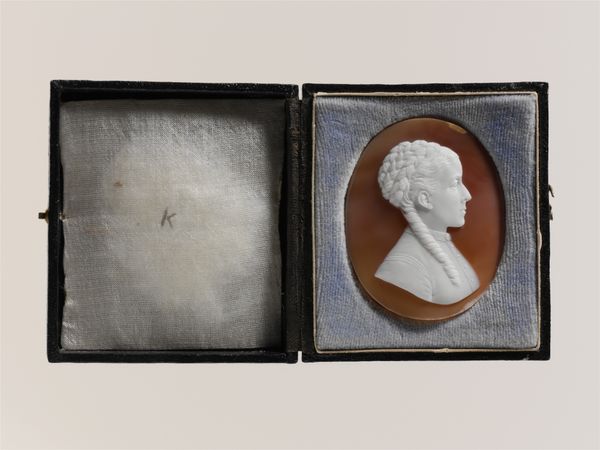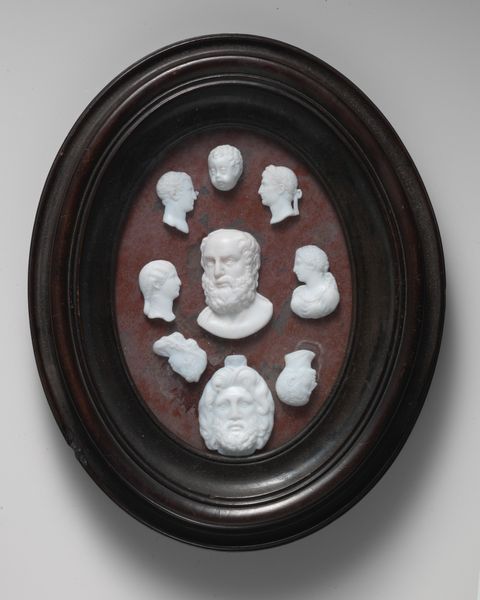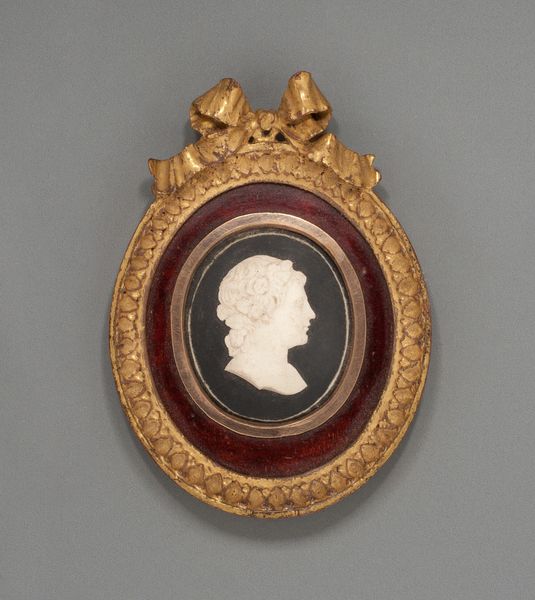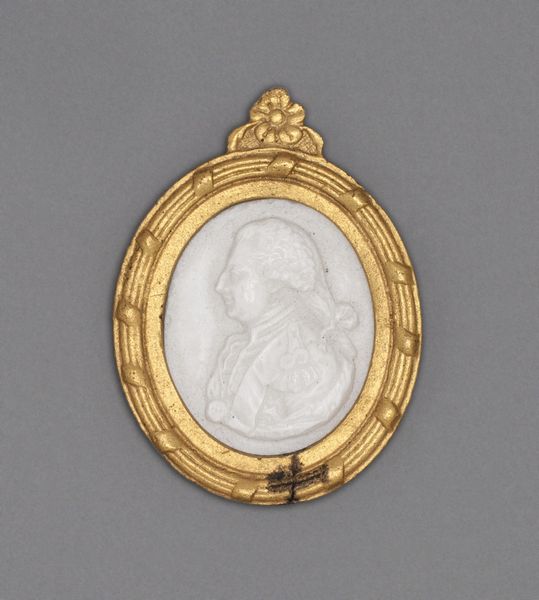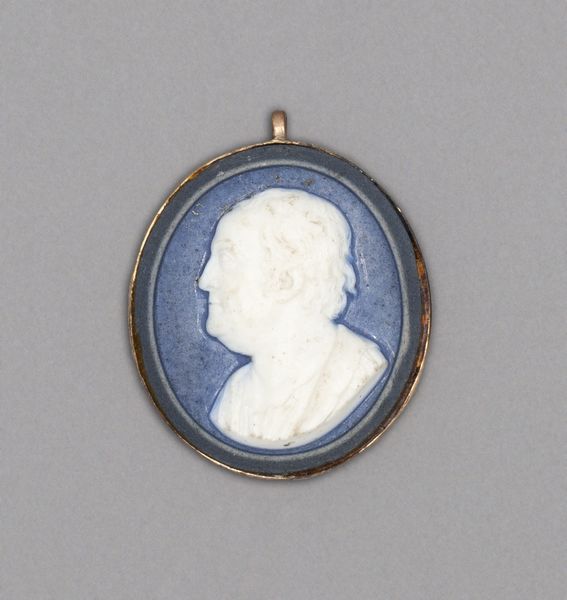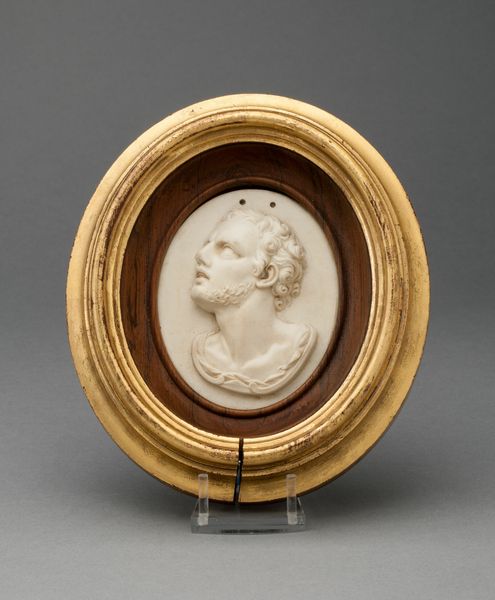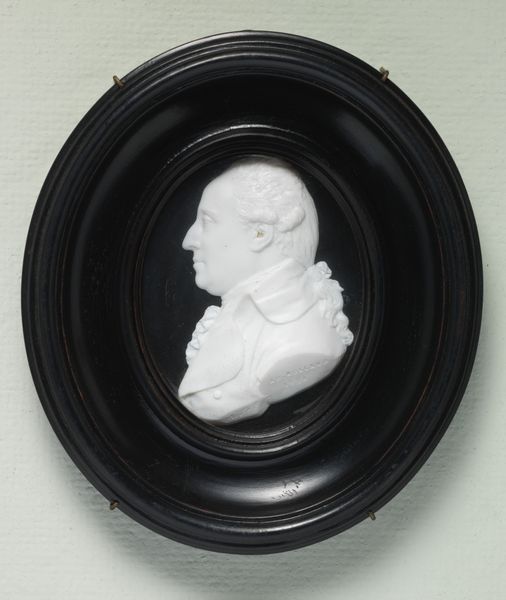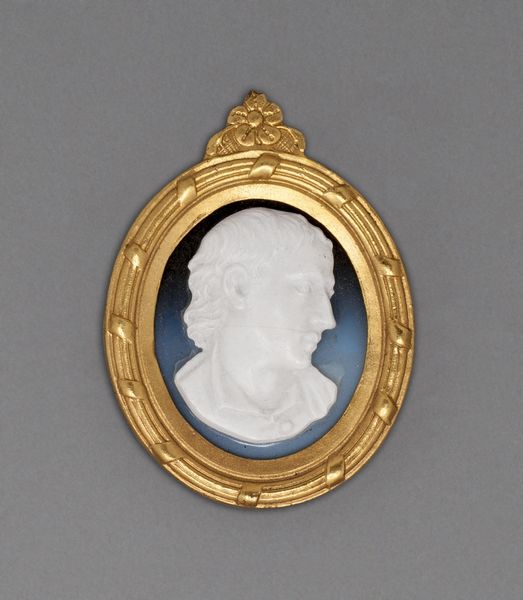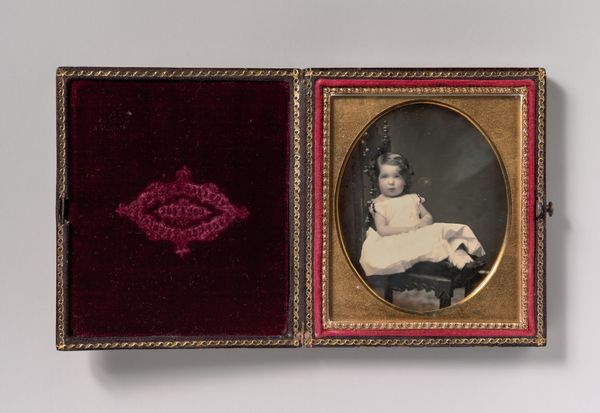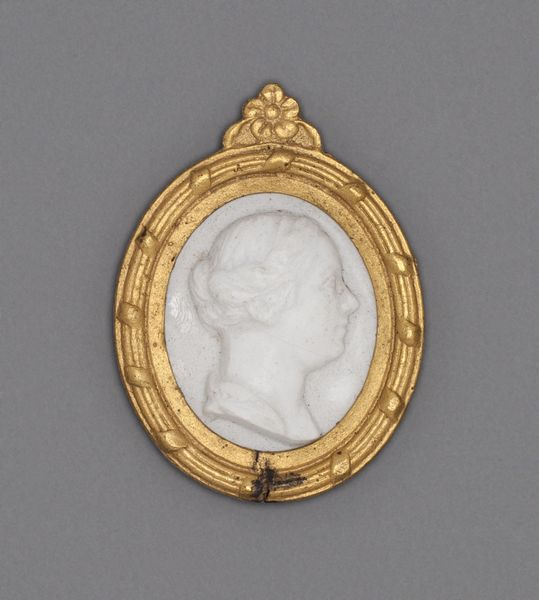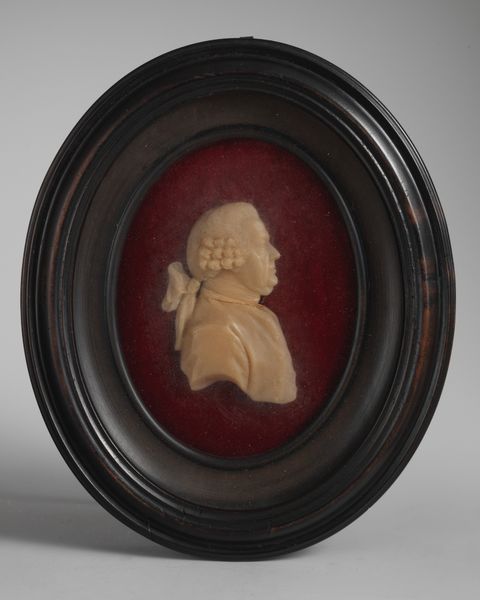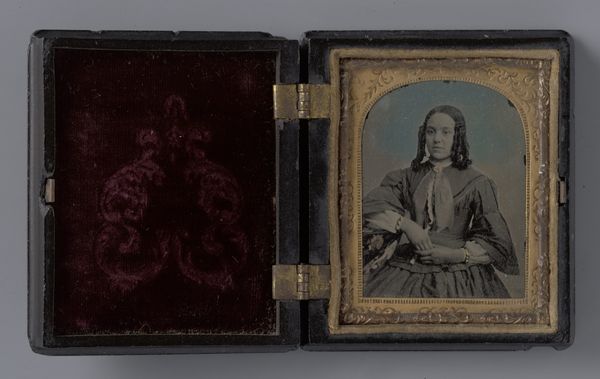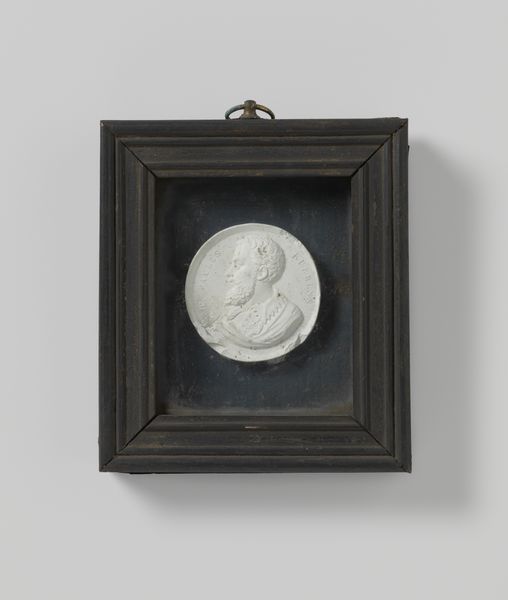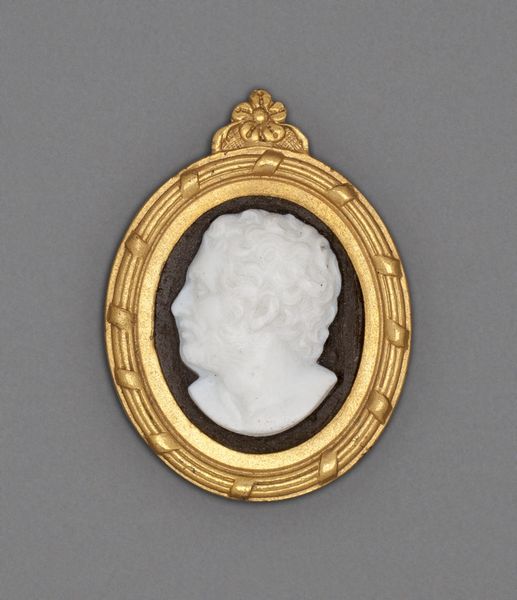
silver, relief, sculpture, ivory
#
portrait
#
neoclacissism
#
silver
#
relief
#
jewelry
#
sculpture
#
decorative-art
#
ivory
#
decorative art
Dimensions: 5 × 3.8 cm (2 × 1 1/2 in.)
Copyright: Public Domain
Editor: This is Erastus Dow Palmer’s, Cameo of John J. Francis, created between 1846 and 1849. The piece utilizes ivory, silver and relief. It’s presented like jewelry, or a decorative art piece. The carvings are delicate, very detailed. What do you make of this work? Curator: The *Cameo of John J. Francis* presents a fascinating glimpse into 19th-century American society and the cultural role of portraiture. This was crafted during a period of immense social and political change. Consider, what does creating a portrait in such a small, precious format imply about the sitter’s status or importance in society? Editor: It’s definitely personal and seems designed to be worn close to the body. Almost like a symbol of status, maybe? Curator: Precisely. The choice of ivory is particularly telling. Think about where ivory came from, who controlled that trade, and how the burgeoning middle class used objects like these to signal refinement and participation in global trade networks. What political narratives might this consumption obscure? Editor: So it's not just a pretty piece. It's related to bigger issues of the time...like wealth and global trade, and maybe even inequality? Curator: Absolutely. Even Neoclassicism style connects back to the power of Greek and Roman imagery...an implied reference to concepts of republic, citizenship, or democracy that would resonate during this period, in what way is it in tension with the history of exploitation behind these precious materials? Editor: It’s eye-opening to see how this little cameo opens up to such a rich history. I’ll never look at decorative arts the same way again! Curator: That’s the power of historical analysis. It reveals the intricate layers of meaning and power embedded within even seemingly simple objects.
Comments
No comments
Be the first to comment and join the conversation on the ultimate creative platform.
